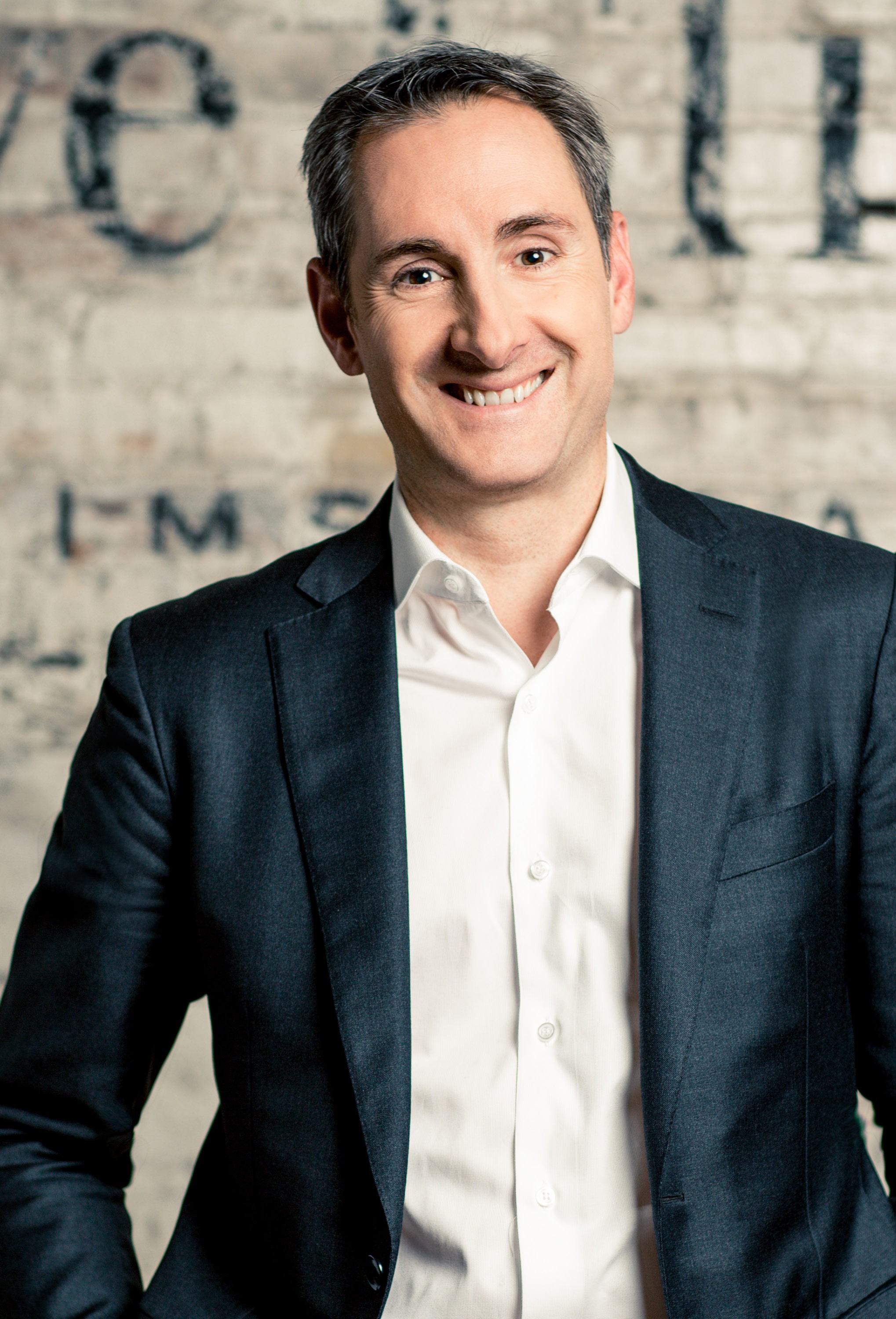He took over the Moët Hennessy India operations in November 2016 at a time when he was also heading the company’s Canada operations. Till the end of January this year, Stéphane de Meurville divided his time across continents. Shalini Kumar catches up with MH India’s new managing director who has an exciting roadmap for the growth of the company & its brands here.
Stéphane De Meurville is a busy man. He has had just a few months to helm the Indian subsidiary of Moët Hennessy which is a part of the luxury goods conglomerate Luis Vuitton Moët Hennessy. This coming straight on the heels of his move from Canada, where he was the General Manager of Moët Hennessy Portfolio in Canada since 2011 till January this year.
Stéphane can be called a veteran at Moët Hennessy — he started his career with the company in 1996 and has, over the years, held various roles in marketing (at Moët Hennessy Europe), in business development (at Maison Veuve Clicquot) and general management in the Middle East and eastern Africa.
For him the best part of working with Moët Hennessy is the privilege of working with “truly iconic collection of maisons (houses)”. He says, “The excellence, craftsmanship and diversity of our brands embody their unique savoir-fare and heritage. This spirit of the company makes us push boundaries, innovate and challenge ourselves.”
And this is what also presents an opportunity to experience the different cultures around the world which has now brought him to India. He believes that all markets have a fair share of constraints, and India is not so different from Canada as the latter is also highly regulated. “That being said, it forces you to be creative and innovative. This country’s potential is enormous, and there is a lot we still want to explore, and achieve. I would also say that the Indian market has truly progressed from the time we first entered here, and our brands have achieved wide recognition. The Indian Subcontinent is one of our most promising markets and has been growing consistently year-on-year.”
Coming from such widely different markets, he has noticed quite a lot of differences between the two: the consumptions modes, the consumer base and product categories, they all vary. “For instance, the Indian market often has clear geographical demarcations — in the south, it is brandy, and in the north whisky is the more popular beverage.”
For Stéphane, India was a concept he knew through second-hand information before taking on his new responsibility. “I knew a bit about the Indian sub- continent, but the last few months have been an exciting learning experience.”
This knowledge that Stéphane has gained about different Indian cities is by visiting them personally. Although
reluctant to comment on which city’s excise policy is better, say that the key me are strong consumption priorities are Mumbai, D Bangalore, Chennai a addition, the rest of the presents huge opportu Colombo and Maldives,”
Now that Stéphane h settle in a bit into the ma chair, he believes his will be to develop the C sparkling wine, while Moët Hennessy’s stron that includes Moët & C Perignon, Glenmoran and Hennessy.
“Being the custod extraordinary brands, we building more value experiences for our co brands must continue and lead as our consu
to their unquestionable asserts.
However for him, a team, he says, the government regulations dynamic business envir constant challenges. St motivated to overcome does remains tight-lip data on adding new p Moët Hennessy’s India p
Talking about Chandon, the brand has been making quite some waves in the Indian market recently. It released its innovative Chandon Délice in May this year, even though Moët Hennessy had launched the Chandon Brut and Rosé in 2013. Even though India is not a sparkling wine consumer’s market, Stéphane believes that the MH India’s Chandon has seen “prolific growth” in the years since its introduction into the country.
And Stéphane believes that as far as the young wine market is concerned, India can produce international quality wines. “There is certainly a strong expectation from the Indian consumers for well-crafted wines, as we have seen from the success of Chandon since its launch in India. We have also seen many other players enter this segment after Chandon was launched — which always helps the market grow bigger. We have huge ambition on Chandon which is noticeable with our investment behind a state-of-the-art winery in Dindori, Nashik, which also has a stunning visitor’s centre that we opened for public in April 2016,” Stéphane explains.
“While we are very happy with the current response the market and consumers have given us, there is still a long way to go and many more consumers to bring into the Chandon culture.”
The more “luxurious” cousin of sparkling wine, champagne, has been the mainstay of Moët Hennessy, and its labels Dom Pérignon, Moët & Chandon and VeuveClicquot — are well known in India. But they do seem to have a slower growth, and not significant enough presence in the Indian market.
Explains Stéphane about that: “India and the Moët Hennessy
“Champagnes celebrate, Belvedere lights the night, Glenmorangie & Ardbeg delight the senses, Chandon starts the party and Hennessy never stops to surprise you”
the special moments in their lives and is to continue to position Moët & Chandon in India as the “clear drink of choice for affluent Indians”, with a broader target audience of luxe millennials. “Our consumers understand that when they drink our champagne, they are imbibing a lifestyle, and they are more than happy to pay for the value they receive in return,” he says.
The Moët Hennessy portfolio is champagne portfolio enjoy a strong, shared tradition of luxury. Moët & Chandon and Dom Perignon, for instance, are synonymous with champagne in this country, and we have created some truly iconic experiences for our high networth individual consumers over the years, co-hosted and attended by kings and movie stars. Champagne is something that people share for consumption in India for our brands has been significantly growing.”
Having said that Stéphane asserts that he is here to reinforce the champagne market with the marketing team at MH India. “We are looking at capitalising on the wedding market this year and next, across our champagne brands.”
Apart from that, Stéphane’s strategy diverse — from wines to brown spirits and white spirits, the company has a foothold in each segment and for Stéphane each brand is important in the growth story. “Different moments of consumption, markets and target audiences demand unique offerings. Champagnes celebrate, Belvedere lights the night, Glenmorangie & Ardbeg delight the senses, Chandon starts the party and Hennessy never stops to surprise you,” says Stéphane.
In addition to that, Stéphane believes that different seasons and occasions around the year dictate the marketing and brand focus in India. “Weddings and Valentine’s Day see a push towards Chandon and champagne, while summer has us focus on cocktails with Belvedere The Moët Hennessy portfolio is diverse — the company has a foothold in each segment and for Stéphane each brand is important in the growth story spritzes. We are keen on focusing on Hennessy cocktails especially the Iced Tea going forward, while the End of Year sees Champagnes and Chandon (specifically Diwali) become part of the celebrations,” he explains.
In India, nobody can talk of alcohol without mentioning whisky — it is after all world’s largest whisky market. And according to Stéphane, Indian luxury spirits consumers are sophisticated and discerning, especially when it comes to whiskies. “With India being the world’s biggest whisky market, we aren’t surprised with the recruitment and upgradation into single malt. We see a steady increase in the interest for our award-winning single malts Glenmorangie and Ardbeg,” he adds.
Scotland’ favourite single malt Glenmorangie is gaining heady market share year-on-year in India. “Our range is well distributed both in the domestic market and duty free shops across Indian airports. With Glenmorangie, we have a beautiful portfolio of whiskies with an extra matured and a duty free exclusive range, along with our
25YO and Prestige whiskies,” informs Stéphane.
“Also, whisky cocktails and the trend of whisky bars are adding to the interest and demand for single malts. We are increasing awareness our range of Glenmorangie whisky via whisky and food pairings, flights which showcase the range and promotions in country clubs. In addition, we continue to build brand awareness through retail and on- trade activations, digital presence and clutter breaking consumer experiences in duty free,” he adds.
Whisky itself is such a dynamic category with Highland and speyside malt whiskies too making an inroad into the whisky-loving minds. For Moët Hennessy it could not come as better news. Islay malt is a smaller category and Moët Hennessy’s Ardbeg has severe competition in the likes of Laphroaig, Bowmore, Lagavulin and Caol Ila. However, Stéphane doesn’t seem worried about it. He believes that India being the growth centre in Asia altogether, audience are open to trying extremes. “And Ardbeg is an extreme. It is the single malt maker’s single malt! The rich in India are looking for differentiated experiences that are intense and not easy. Ardbeg is not easy. It is an acquired taste, with its peaty profile. Ardbeg is a natural fit in India and we are confident of its continuing growth,” he claims.
Moët Hennessy is also the proud owner of the super premium vodka Belvedere, which has been doing very well in India — clocking double-digit growth continuously. Says Stéphane about that:
“Our consumers know Belvedere gives them superior quality — combined with its status as the world’s first luxury vodka. So we are seeing fantastic year- on-year growth for Belvedere, which is gaining market share and momentum. India is emerging as an important vodka market as with a steady rise in disposable income, the rising middle classes and millennial segments acquire a taste for luxury. People are upgrading. When they go out for a drink, they’re doing so because they want to really appreciate the alcohol.”
And Stéphane is more than glad that it is one of Moët Hennessy brands. With Belvedere, the company also offers exciting consumer programs aiming to make it the vodka of choice in super- premium category. The Belvedere night rituals are now de rigueur in clubs across the country. “Its ‘Relearn Natural’ philosophy which offers a Spritz cocktail concocted out of purely natural ingredients, or the brand’s endeavour to make a difference all provide continuous consumer engagement and product differentiation. We are now also digitally connected to Indian millennials, with our local social media handles,” explains Stéphane.
The newest managing director of Moët Hennessy India is excited about the prospects of the company in the country “as we are experiencing tremendous growth” and MH India would like to invest further. “We will keep creating value for our partners while delivering impeccable consumer experiences with our super premium portfolio. I am excited to join our team in India and work towards strengthening Moët Hennessy’s role as an industry influencer and trend setter,” he says on a sign-off.


